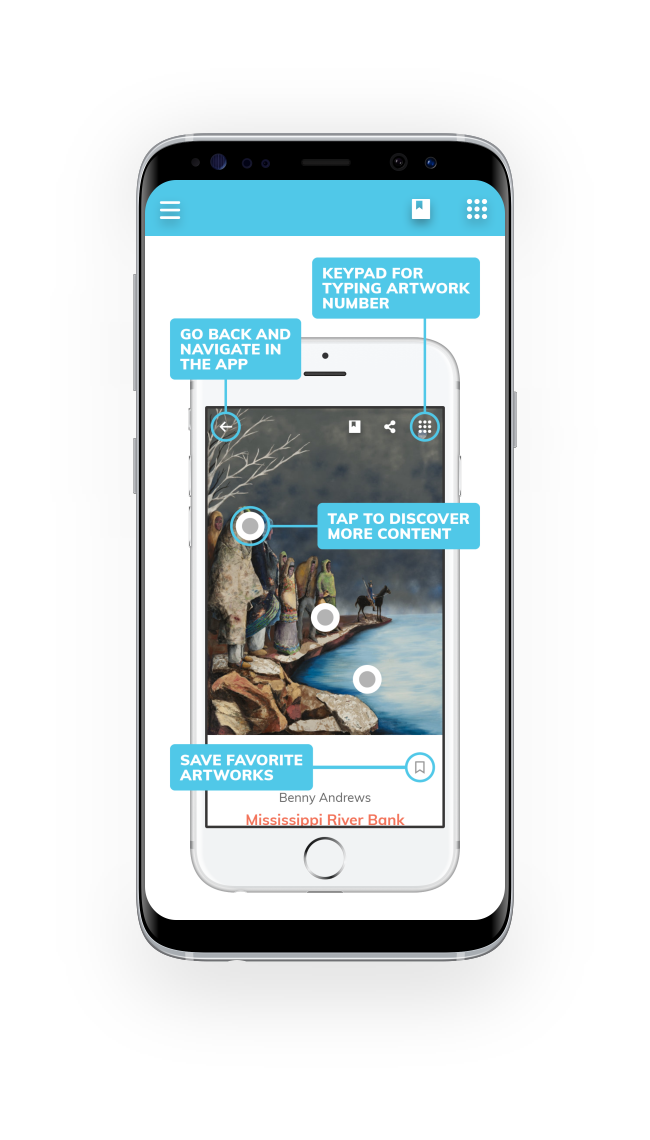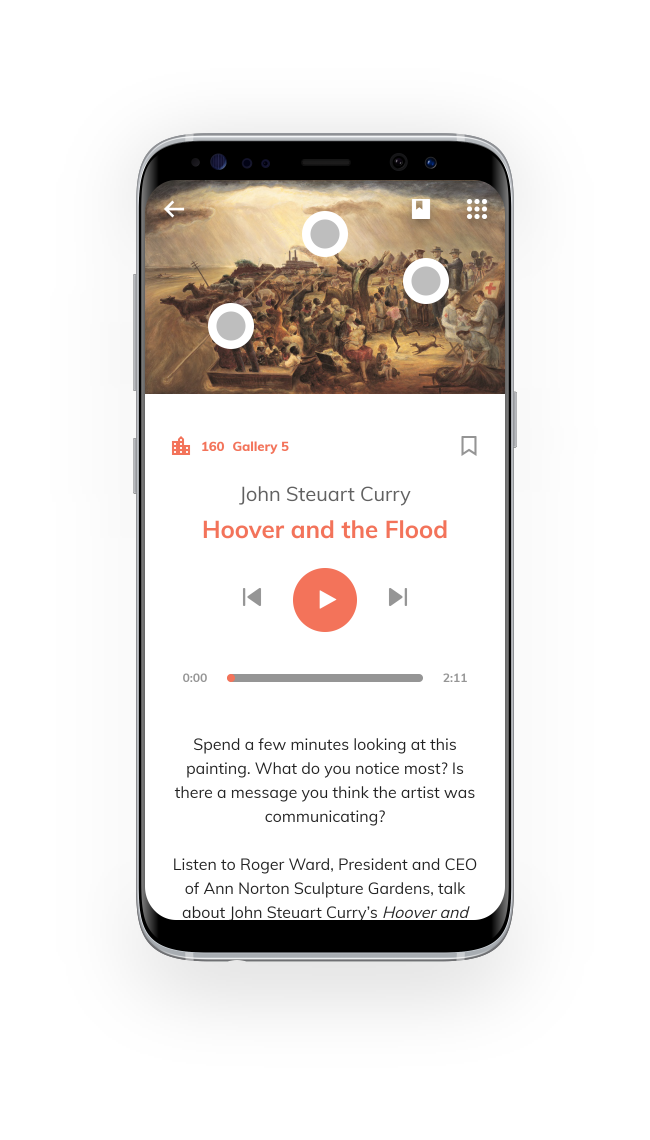
Mississippi Museum of Art
A New Mobile Guide for New Galleries
The Mississippi Museum of Art collaborated with CultureConnect to develop a digital program that offers the art-loving public opportunities to learn and interact with the museum staff no matter where they are in Mississippi. The final project included two digital experiences – a mobile guide and live social media stream — both of which can be used inside and outside of the museum.
These projects were launched with the opening of newly reinstalled permanent galleries and are the result of ongoing collaboration with the local community throughout its production from audio interpretation, user testing, a Q&A forum and social media.
Special Features
- Q&A feature development
Products
- Advanced Mobile Guide
- Social Stream
Services
- User Testing
Recognition
- “Digital Strategies for Engaging Visitors”, 2018, SEMC
Deeper Stories
The mobile guide enriches the visitor experience by allowing guests to chart their own course through exhibition themes, dive deep into specific artworks revealing interpretation and media not available on wall-plaques, and dialogue with museum staff directly through a Q&A forum.
Mobile Guide Discussion Forum
A unique feature of this mobile guide is the inclusion of a discussion forum for visitors to leave comments and ask questions to which curators can respond. Signing in through social media or email alerts visitors when they have received a reply and allows museum staff to audit and manage what is published in the app. User testing revealed that even if visitors choose not to comment, they often enjoy reading the comments of others, particularly if a curator responds!
Hotspots = Layered Storytelling
Most artworks included audio interpretation as well as 3–5 animated touchpoints that visitors may tap to learn more about the artwork in a multimedia pop-up. From explanations of painting details to surfacing related media or themes – hotspots create bite-sized interpretive nuggets that add up to a full meal.
Live Social Media Stream
The public is able to contribute beyond the mobile guide through a social stream experience. By sharing posts on Instagram and Twitter and tagging #artinms, visitors content becomes part of the the MMA’s in-gallery installation of social stream. This opens up opportunities for residents to express what they experience as art beyond the collection but also, share their favorite experiences within the museum.
On-Site, Pre-Launch User Testing
Prior to the release of the mobile guide, CultureConnect’s team conducted on-site user testing evaluating three main aspects: content, physical experience in the gallery, and app user experience. Since the gallery was still under construction, the museum set up a temporary space with reproductions of sample artwork to act as a simulation space for the test. Testers were asked to use the mobile guide as they worked through the simulated gallery space, complete a survey when they were done, and then follow up with a brief interview.
Feedback around content was validating (e.g. visitors respond well to story-driven interpretation and strong or contrasting points of view) while feedback on the user experience helped influence the ordering of stops in the tours (e.g. visitors navigate visually first, numerically secondarily).






